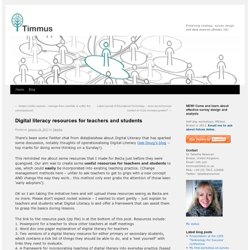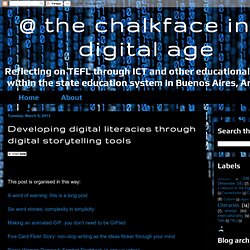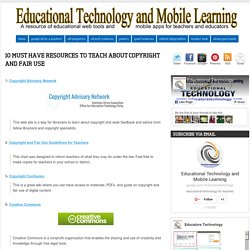

Who’s Using Social Media Anyway? Guest post by Ann Barrett, Director eRecruitment & Social Media Strategy at Sun Life Digital.

You can find Ann via her Social Recruiting blog where she writes about social media and Human Resources. She can also be found on LinkedIn. Facebook. Twitter. Google+. For a long time, there seemed to be a perception that only younger people (under 25) were “on” social media. Think about it: Almost every company, globally, is using a social media channel for branding and engagementNews channels use Twitter to solicit questions and commentsCommercials almost always have a “check us out on” Facebook or Twitter as part of their closingFor reality TV shows… Twitter is a stapleFor mobile, social channels are readily availableMany web sites enable you use your Facebook, Google+, Twitter or LinkedIn accounts to sign into other accounts such as Pinterest, TripAdvisor, etc.Some companies provide the ability use your social accounts such as LinkedIn to apply for jobs. Teaching Nonfiction Reading Skills in the Science Classroom [ACTIVITY]
Posted by Bill Ferriter on Monday, 05/20/2013 I don't have a ton of time to write today -- I've spent the past week teaching and learning alongside of some really progressive thinkers in Australia -- so I figured I'd share a few handouts that I've been using in class this year to teach nonfiction reading skills in my sixth grade science classroom.
![Teaching Nonfiction Reading Skills in the Science Classroom [ACTIVITY]](http://cdn.pearltrees.com/s/pic/th/teaching-nonfiction-classroom-58588283)
Each lesson is tied directly to a standard in the Common Core Literacy in History, Science and Technical Subjects curriculum -- and each lesson is designed to be used in tandem with a current event connected to the concepts that our students study. If you like the lessons, all you'll need to do is find a current event to teach them with! Hope they help someone: Active Reading Behaviors Handout, Active Reading Behaviors One of the reading strategies that we will introduce to students is the notion of making "active reading comments" while reading. Transliteracy for young readers. ALA 2011 - Why Transliteracy. The Never Ending Thesis. Digital literacy resources for teachers and students. There’s been some Twitter chat from @dajbelshaw about Digital Literacy that has sparked some discussion, notably thoughts of operationalising Digital Literacy ( see Doug’s blog – top marks for doing some thinking on a Sunday!).

This reminded me about some resources that I made for Becta just before they were quangoed. Our aim was to create some useful resources for teachers and students to use, which could easily be incorporated into existing teaching practice. (Change management methods here – unfair to ask teachers to get to grips with a new concept AND change the way they work… this method only ever grabs the attention of those keen ‘early adopters’). OK so I am taking the initiative here and will upload these resources seeing as Becta are no more. Digital Literacy across the Curriculum handbook. This handbook introduces educational practitioners to the concepts and contexts of digital literacy and supports them in developing their own practice aimed at fostering the components of digital literacy in classroom subject teaching and in real school settings.

The handbook is aimed at educational practitioners and school leaders in both primary and secondary schools who are interested in creative and critical uses of technology in the classroom. Although there is increasing policy and research attention paid to issues related to digital literacy, there is still relatively little information about how to put this into practice in the classroom. There is even less guidance on how teachers might combine a commitment to digital literacy with the needs of their own subject teaching. How can digital literacy be fostered, for example, in a maths or science lesson? The Essential Elements of Digital Literacies. Information fluency model. Developing digital literacies through digital storytelling tools.
This post is organised in this way: A word of warning: this is a long post Dear Audience, I warn you: this is going to be quite a wordy blog entry.

It’s going to be insightful and helpful as well; you’ll see. Please, go on reading. In this post, I’m reflecting on the knowledge I gained and the skills I developed as I used web 2.0 tools to carry out five storytelling activities. In order to capture my thoughts and feelings as I was trying out each tool during the storytelling fortnight, I wrote the different sections of this post in instalments following a series of steps (process writing).
I wanted to connect digital storytelling with thinking skills (as described in Bloom’s Revised Taxonomy of Thinking Skills – my own agenda) and digital literacies (as discussed by Howard Rheingold and Doug Belshaw – last fortnight’s topic). Six word stories: complexity in simplicity Writing six word stories is not as simple as it seems. These words can’t be chosen at random. A little trick: use visuals. FairUseBestPractices.pdf (application/pdf Object) 10 Must Have Resources to Teach about Copyright and Fair Use. 1- Copyright Advisory Network This web site is a way for librarians to learn about copyright and seek feedback and advice from fellow librarians and copyright specialists 2- Copyright and Fair Use Guidelines for Teachers This chart was designed to inform teachers of what they may do under the law.

MicroModules.